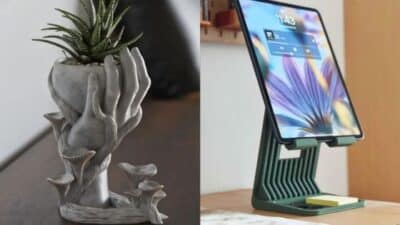Ever wondered how some of the most advanced industries create parts that are incredibly strong yet surprisingly light? Or maybe you’ve been looking for that extra edge in your own 3D printing projects, pushing past the limits of standard plastics. If so, get ready to dive headfirst into the exciting world of carbon fiber 3D printing! This isn’t just about printing with black filament; it’s about unlocking a new realm of possibilities, transforming your designs into robust, high-performance components that stand up to serious demands. We’re talking about a game-changer for hobbyists and professionals alike, bringing industrial-grade strength right to your desktop or workshop.
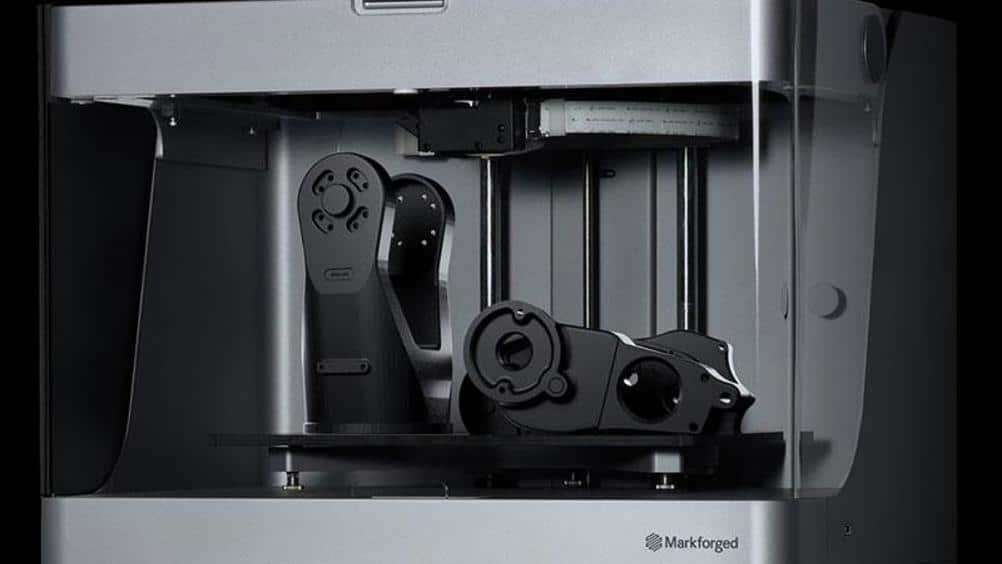
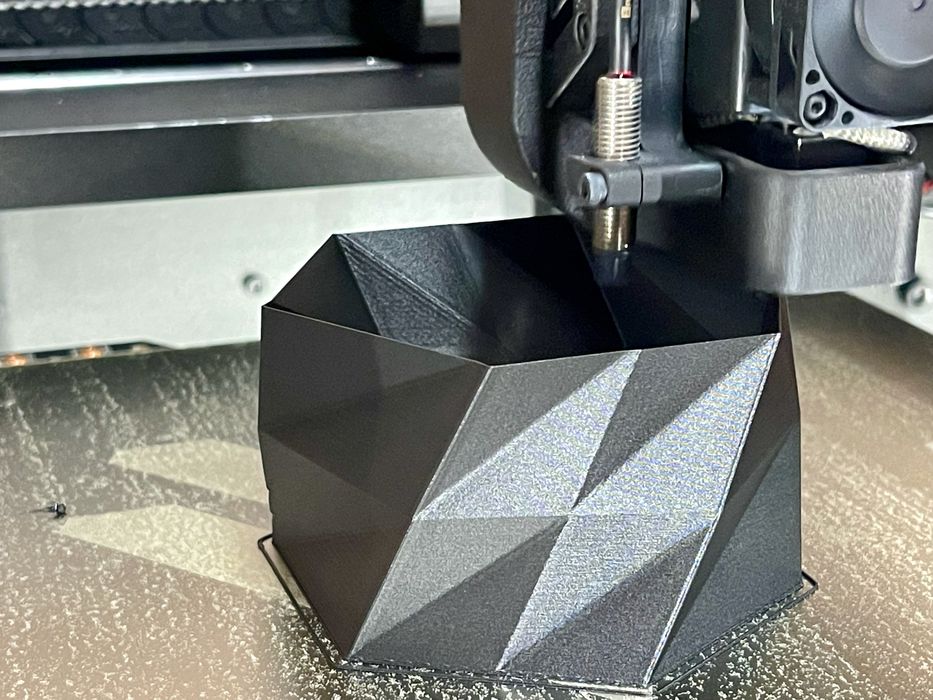
What Exactly is Carbon Fiber 3D Printing?
Let’s break it down. At its core, carbon fiber 3D printing involves using filaments or powders infused with tiny strands of carbon fiber. You’ve probably heard of carbon fiber in high-performance cars, aerospace, or sports equipment. That’s because it’s legendary for its exceptional strength-to-weight ratio and stiffness. When these microscopic fibers are incorporated into 3D printing materials, they transfer these incredible properties to your printed parts.
Think of carbon fiber as the ultimate reinforcement. It’s made from incredibly thin, strong crystalline filaments of carbon, often woven into fabrics, but for 3D printing, it typically comes in two main forms: chopped or continuous.
- Chopped Carbon Fiber (CCF): This is the most common and accessible form. Short, tiny strands of carbon fiber (usually less than a millimeter) are mixed directly into a polymer base like Nylon, PETG, ABS, or even PLA. When you print with these filaments, the chopped fibers are distributed throughout the material, significantly boosting its strength, stiffness, and dimensional stability. It also often gives your prints a cool matte, slightly textured finish.
- Continuous Carbon Fiber (CFC): This is the next level. Instead of short, disconnected pieces, continuous carbon fiber printing involves embedding long, unbroken strands of carbon fiber within the polymer matrix as the part is being printed. Imagine weaving a super-strong thread into your print path. This method yields parts with strength comparable to machined aluminum, making it ideal for extremely demanding applications. Machines capable of this are more specialized and generally pricier, but the results are truly remarkable.
The goal? To create parts that are not just geometrically complex, but also structurally superior, resisting bending, breaking, and heat far better than their plain plastic counterparts.

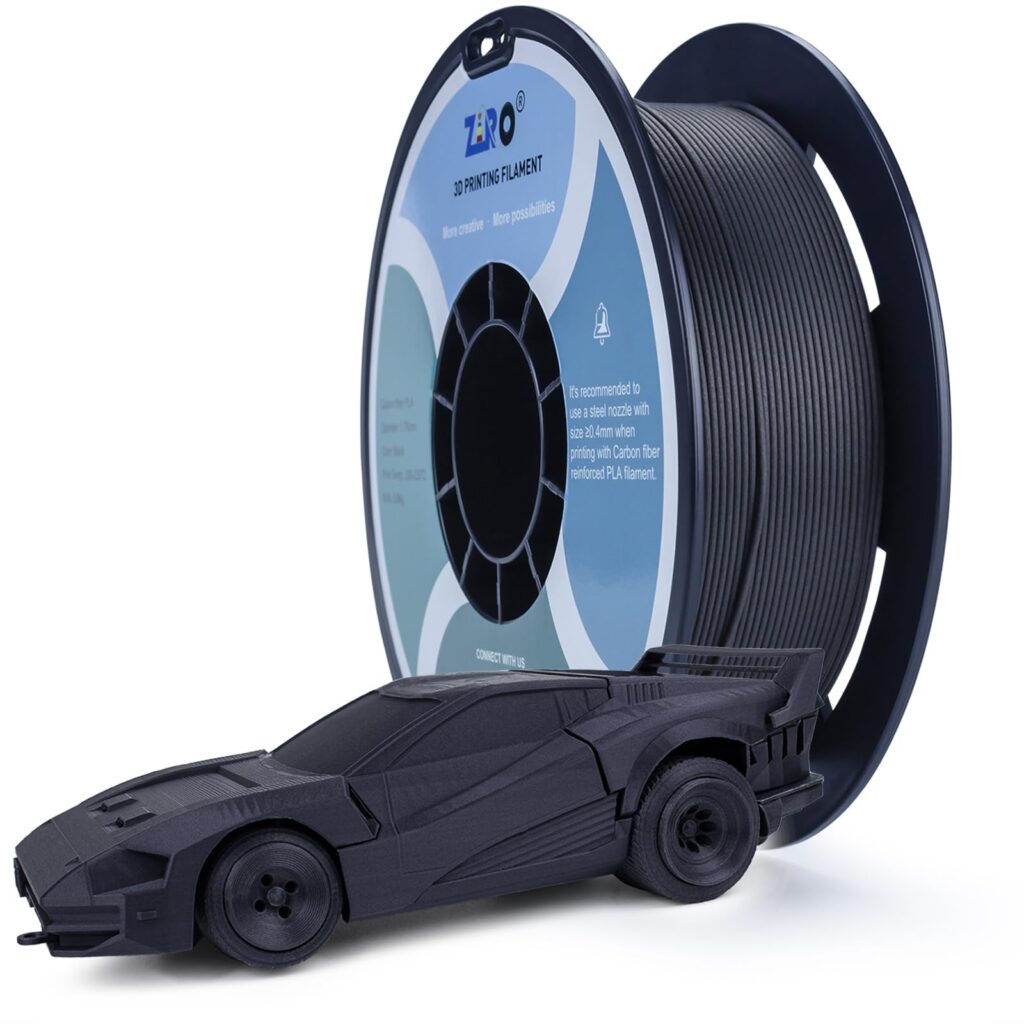
Why Go Carbon Fiber? The Unbeatable Performance Edge
So, why bother with carbon fiber when regular plastics are so much easier to print? The answer lies in the dramatic boost in performance. Here’s why carbon fiber 3D printing is making waves:
Unmatched Strength-to-Weight Ratio
This is the holy grail for many engineers. Carbon fiber parts are incredibly strong for their weight. This means you can design lighter components that perform as well as, or even better than, heavier metal alternatives. For industries like aerospace, automotive, or drone manufacturing, every gram saved translates to improved efficiency and performance. Imagine a drone frame that’s lighter but can carry more payload, or a race car part that shaves off precious ounces without sacrificing structural integrity.
Exceptional Stiffness and Rigidity
Carbon fiber dramatically increases a part’s stiffness. While many plastics are flexible, carbon fiber composites resist bending and flexing, maintaining their shape even under significant loads. This makes them perfect for structural components, jigs, fixtures, and any application where precision and stability are critical. This rigidity helps prevent unwanted deformation, leading to more accurate assemblies and better long-term performance.
Enhanced Durability and Fatigue Resistance
Parts printed with carbon fiber are tougher. They can withstand repeated stress cycles and impacts much better than non-reinforced plastics. This durability extends the lifespan of components, especially in high-wear or high-stress environments. You’ll find these parts resisting cracks and breaks where standard plastics would fail.
Improved Temperature Resistance
Many carbon fiber reinforced filaments also boast higher heat deflection temperatures. This means your parts can perform reliably in warmer environments without deforming or softening. This is crucial for components near engines, in industrial machinery, or those exposed to direct sunlight.
Chemical Resistance
Depending on the base polymer, carbon fiber composites can offer enhanced resistance to various chemicals, oils, and solvents. This makes them suitable for use in industrial settings where exposure to harsh substances is common.
Dimensional Stability
One of the headaches with some 3D printing materials is warping or shrinking during cooling. Carbon fiber often reduces this tendency, leading to more dimensionally stable prints. The fibers help to lock the material in place, resulting in parts that are more accurate and consistent in size, which is a huge plus for tight-tolerance applications.
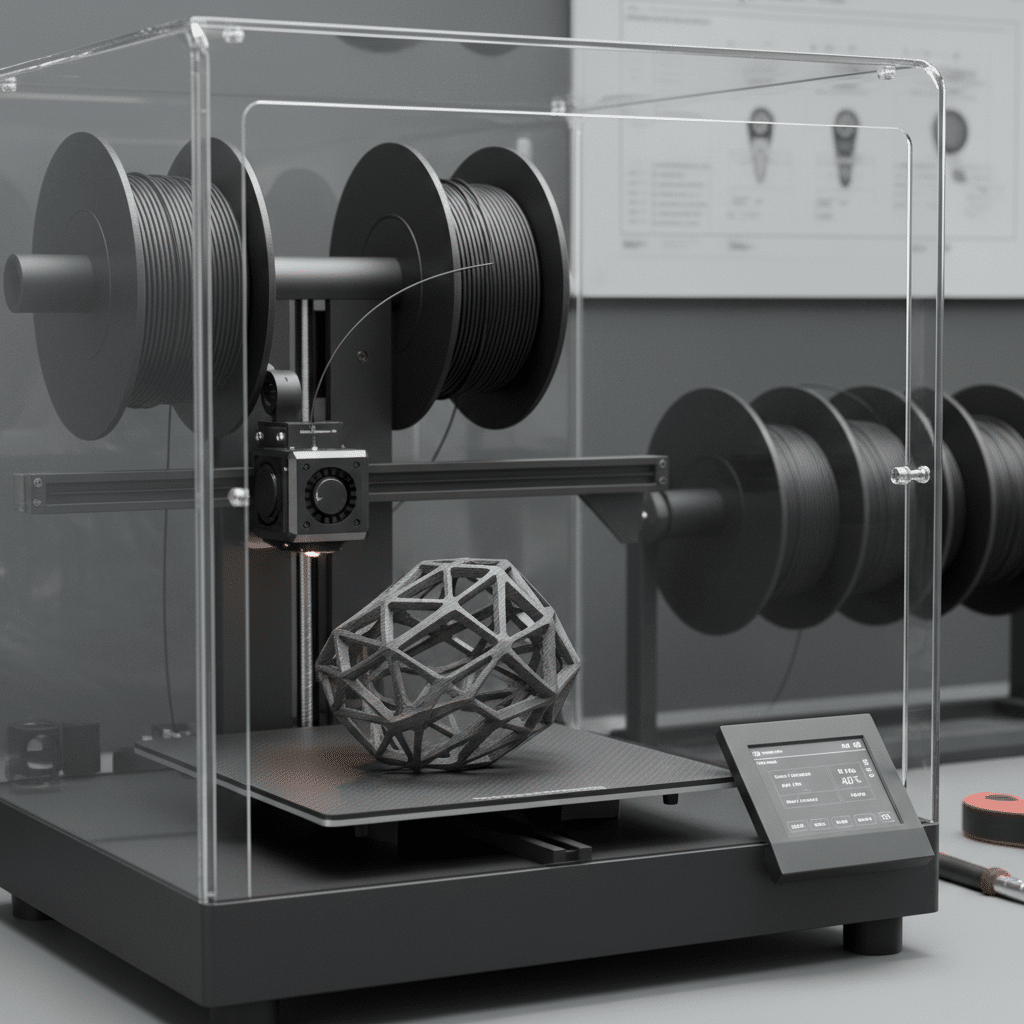
Technologies Bringing Carbon Fiber to Life in 3D Printing
Carbon fiber isn’t just a material; it’s an enhancement that integrates with various 3D printing processes. Understanding these technologies helps you choose the right path for your specific needs.
Fused Deposition Modeling (FDM) / Fused Filament Fabrication (FFF)
This is probably the most common type of 3D printing, and it’s where most people first encounter carbon fiber composites. FDM printers extrude molten filament layer by layer to build a part.
- Chopped Carbon Fiber (CCF) Filaments: As discussed, these are thermoplastic filaments (like Nylon, PETG, ABS) with short carbon fiber strands mixed in. They can be printed on many standard FDM printers, though with some upgrades. They offer a great balance of improved mechanical properties and relative ease of use. Brands like Markforged (Onyx series), MatterHackers (NylonX), and many others offer excellent CCF filaments. These are fantastic for making robust prototypes, custom tools, or even 3D printed cosplay props that need to withstand a bit of rough and tumble.
- Continuous Carbon Fiber (CFC) Printers: These specialized FDM machines take things to the next level. Instead of just melting plastic, they have a second nozzle (or a unique print head) that lays down continuous strands of carbon fiber alongside or within the thermoplastic matrix. This results in parts with incredible anisotropic strength – meaning they are strongest along the direction of the fiber reinforcement. Markforged is a pioneer in this space with their Industrial Series, allowing users to print parts with the strength of aluminum using composites. Anisoprint is another player with their Composite Fiber Coextrusion (CFC) technology. This is where you get truly high-performance, load-bearing parts.
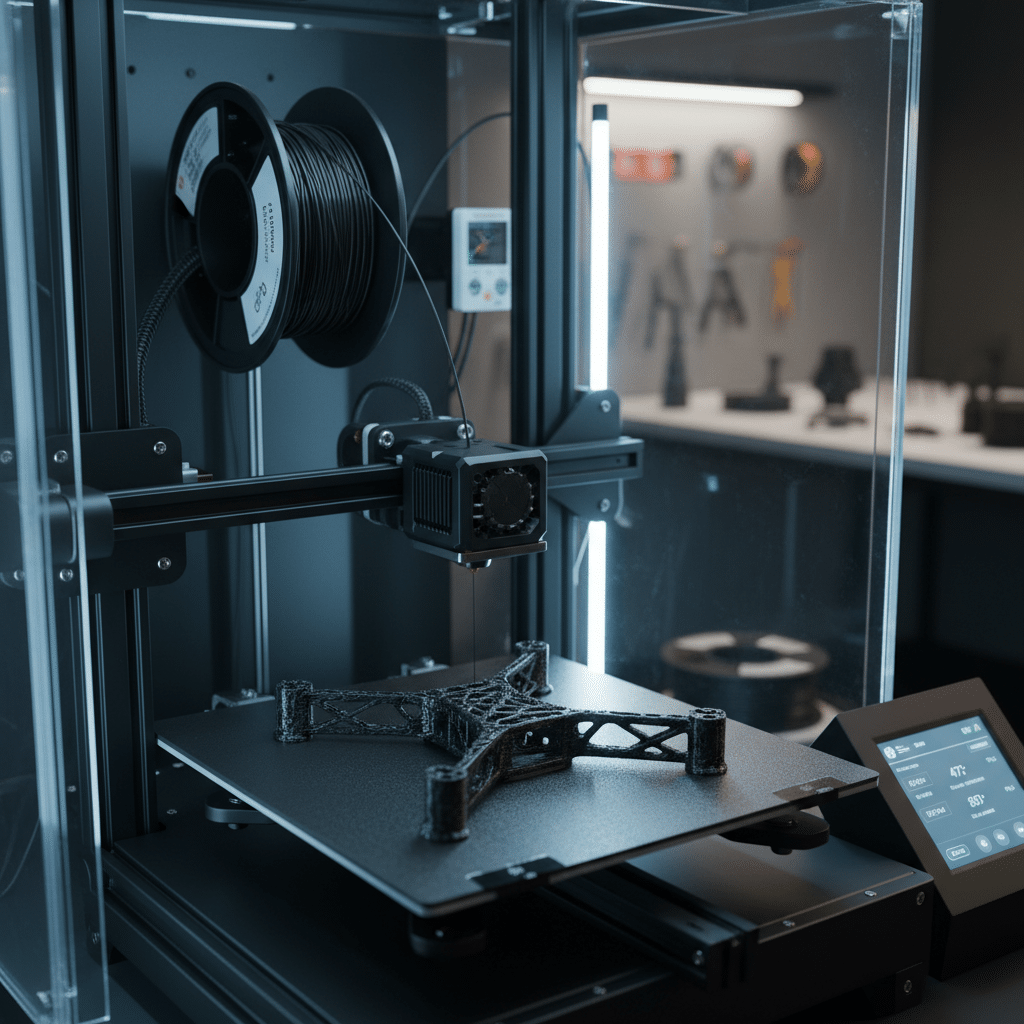
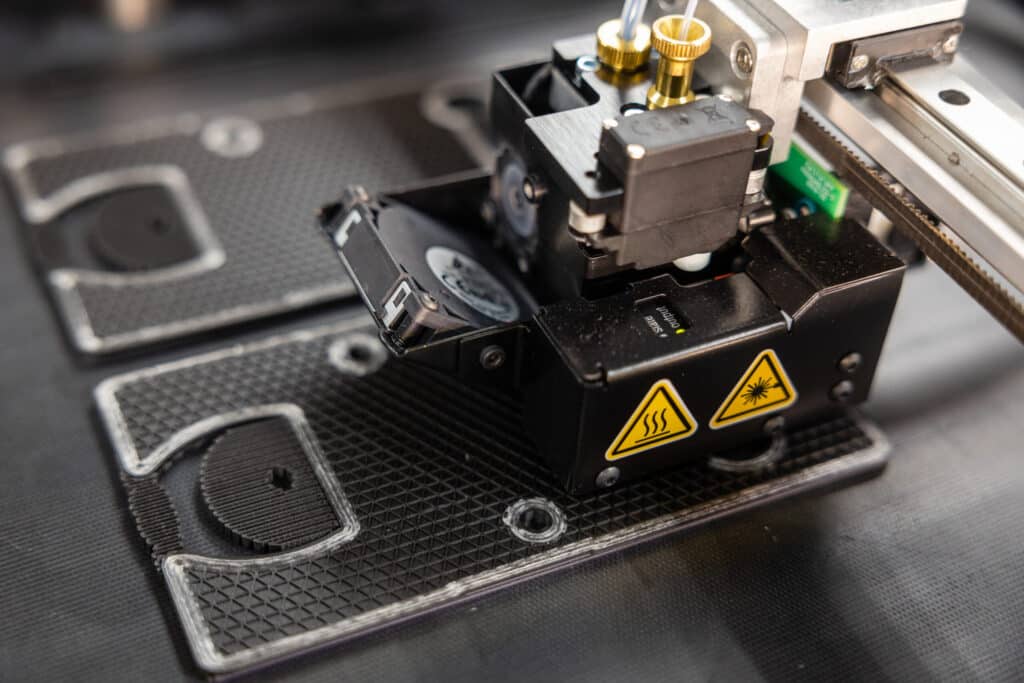
Selective Laser Sintering (SLS)
SLS printers use a laser to selectively fuse powdered material, layer by layer. For carbon fiber applications, specialized nylon powders infused with carbon fiber are used. The laser melts and sinters the carbon-filled nylon powder, creating incredibly strong, isotropic parts (meaning strength is consistent in all directions). SLS technology is known for producing parts with excellent surface finish and no need for support structures (the unfused powder acts as support), making it ideal for complex geometries.
Stereolithography (SLA) and Digital Light Processing (DLP)
While not as common for true carbon fiber reinforcement (due to the difficulty of suspending long fibers in resin and curing them with UV light), some SLA/DLP resins do incorporate ceramic or other reinforcing particles to enhance stiffness and strength. These aren’t carbon fiber in the traditional sense, but they aim for similar mechanical property improvements within the resin-based printing paradigm.
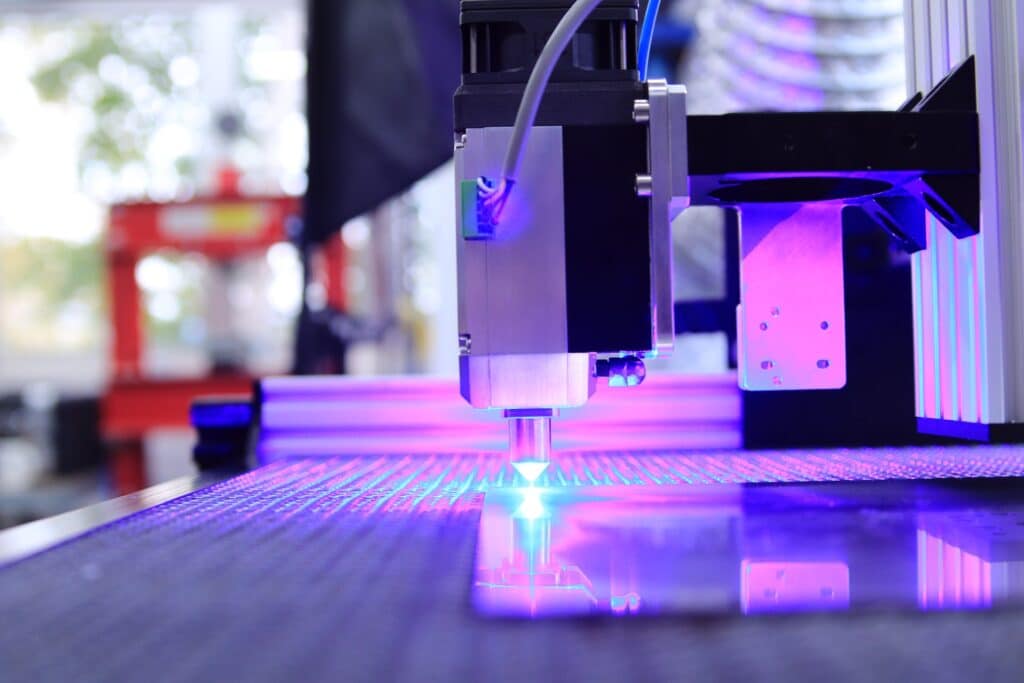
The Supporting Cast: Understanding the Polymer Matrix
While carbon fiber is the star, the polymer it’s embedded in plays a crucial supporting role. The choice of base material significantly influences the final properties of your carbon fiber 3D printed part.
- Nylon (Polyamide): This is perhaps the most popular choice for carbon fiber composites. Nylon itself is tough, flexible, and chemically resistant. When reinforced with carbon fiber, it becomes incredibly strong, stiff, and retains its excellent chemical resistance, making it suitable for automotive, industrial, and drone components. It can be a bit tricky to print due to moisture absorption and warping, but with the right setup, it delivers outstanding results.
- PETG: A great all-rounder, PETG-CF offers a balance of strength, stiffness, and ease of printing. It’s less prone to warping than Nylon and has good layer adhesion, making it a good entry point for those wanting to try carbon fiber printing without diving into high-temp materials.
- ABS: ABS-CF combines the impact resistance and slightly higher temperature resistance of ABS with the stiffness of carbon fiber. It’s often used for functional prototypes and end-use parts where good mechanical properties and a relatively low cost are desired.
- High-Performance Polymers (PEKK, PEEK, Ultem): For the most demanding applications, carbon fiber is combined with high-performance polymers like PEKK or PEEK. These materials offer extreme temperature resistance, chemical inertness, and exceptional mechanical properties, even before carbon fiber reinforcement. When combined with carbon fiber, they create parts suitable for aerospace, medical, and oil & gas industries, capable of operating in harsh environments. Printing with these requires specialized, high-temperature printers with heated build chambers.
The polymer acts as the glue, binding the carbon fibers together and transferring loads efficiently throughout the part. Matching the right polymer to your application’s requirements is key to success.
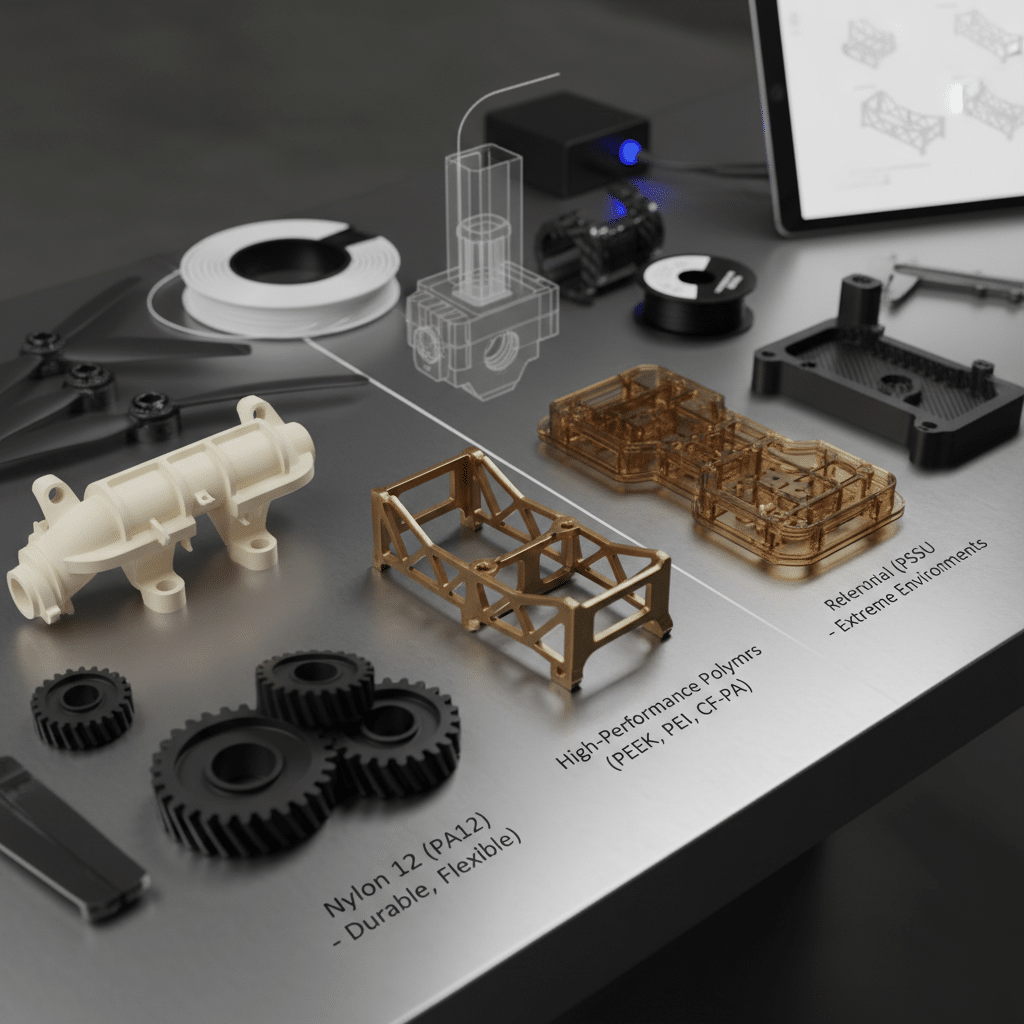
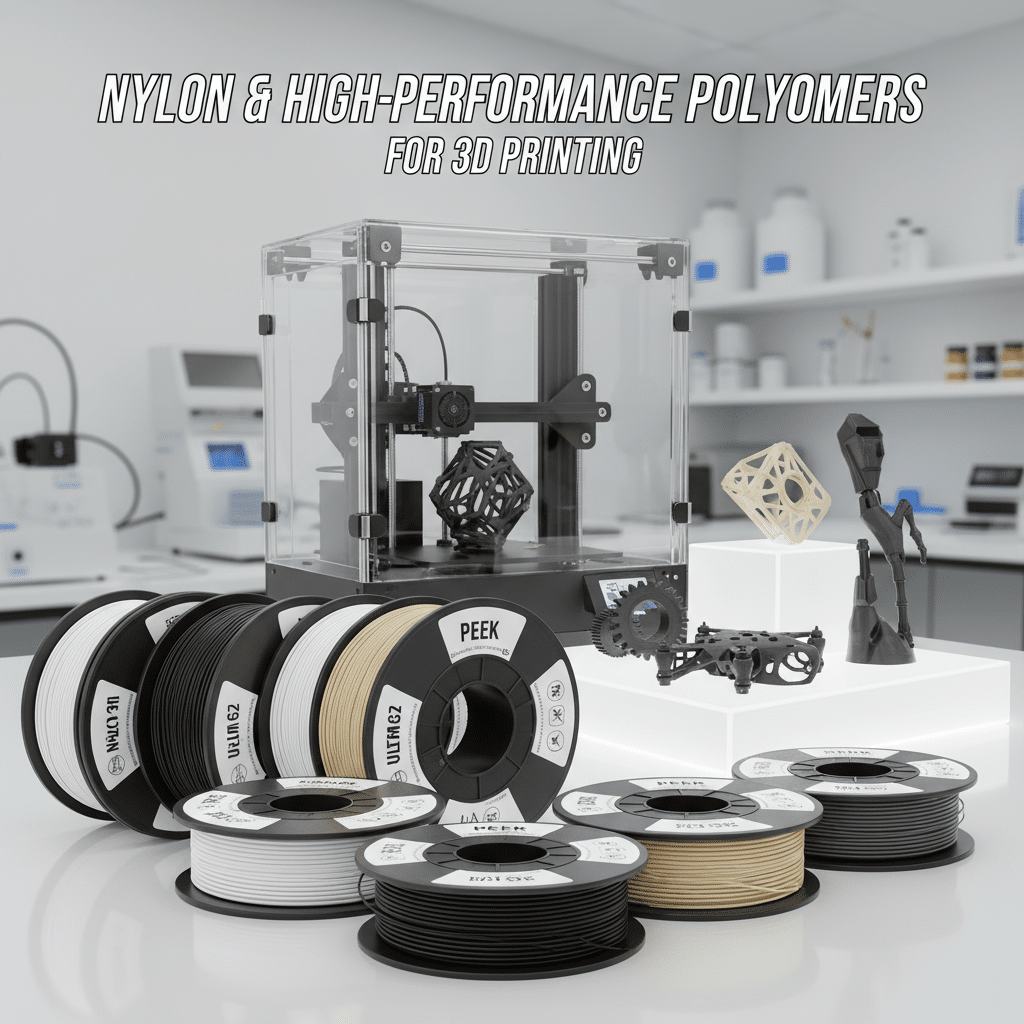
Where Carbon Fiber 3D Printing Truly Shines: Real-World Applications
The capabilities of carbon fiber 3D printing have opened doors across a multitude of industries, transforming how products are designed, prototyped, and manufactured. Here’s a glimpse into its impact:
- Aerospace: This sector demands the utmost in lightweight strength. Carbon fiber 3D printing is used for jigs, fixtures, tooling, and even end-use components like interior brackets, air ducts, and aerodynamic parts. The ability to produce complex geometries with superior strength-to-weight ratios is invaluable for aircraft efficiency.
- Automotive: From rapid prototyping of engine components to creating custom brackets, air intakes, and aesthetic parts, carbon fiber 3D printing offers significant advantages. It allows engineers to iterate designs quickly, test functional prototypes, and even produce lightweight, strong custom parts for performance vehicles. For instance, when designing unique elements that enhance a vehicle’s performance or motorcycle aesthetic, carbon fiber 3D printing provides the flexibility and strength needed.
- Robotics and Drones: In these fields, weight is everything. Lighter robots can move faster, carry more payload, and consume less power. Drones benefit from lighter frames that extend flight times and improve maneuverability. Carbon fiber 3D printing creates robust, lightweight structural components, robotic arms, and drone frames.
- Industrial Tooling, Jigs, and Fixtures: Manufacturing lines often require custom tools, jigs, and fixtures for assembly, quality control, or handling. Traditionally, these were machined from metal. Carbon fiber 3D printing allows companies to produce these items much faster, at a lower cost, and with significantly less weight, improving ergonomics for workers and speeding up production changeovers. Imagine a complex jig that used to take days to machine and weigh a lot, now printed overnight, lighter and just as strong.
- Sports Equipment: High-performance sports equipment often leverages carbon fiber for its strength and lightness. Think custom bike parts, drone racing frames, protective gear, or even specialized components for competitive sailing or rowing. The ability to create customized, performance-tuned parts gives athletes an edge.
- Medical and Prosthetics: While direct human implants often have strict material requirements, carbon fiber 3D printing is excellent for creating custom prosthetic sockets, orthotic devices, and anatomical models for surgical planning. The customizability, strength, and light weight are significant benefits for patient comfort and function.
- Consumer Goods and Customization: Beyond industrial applications, carbon fiber 3D printing is making its way into high-end consumer products, offering enhanced durability and a premium feel. It also enables incredible customization for hobbyists and makers, allowing them to create bespoke, strong parts. If you’re looking for 3D print ideas that stand out and perform, carbon fiber is a fantastic avenue.
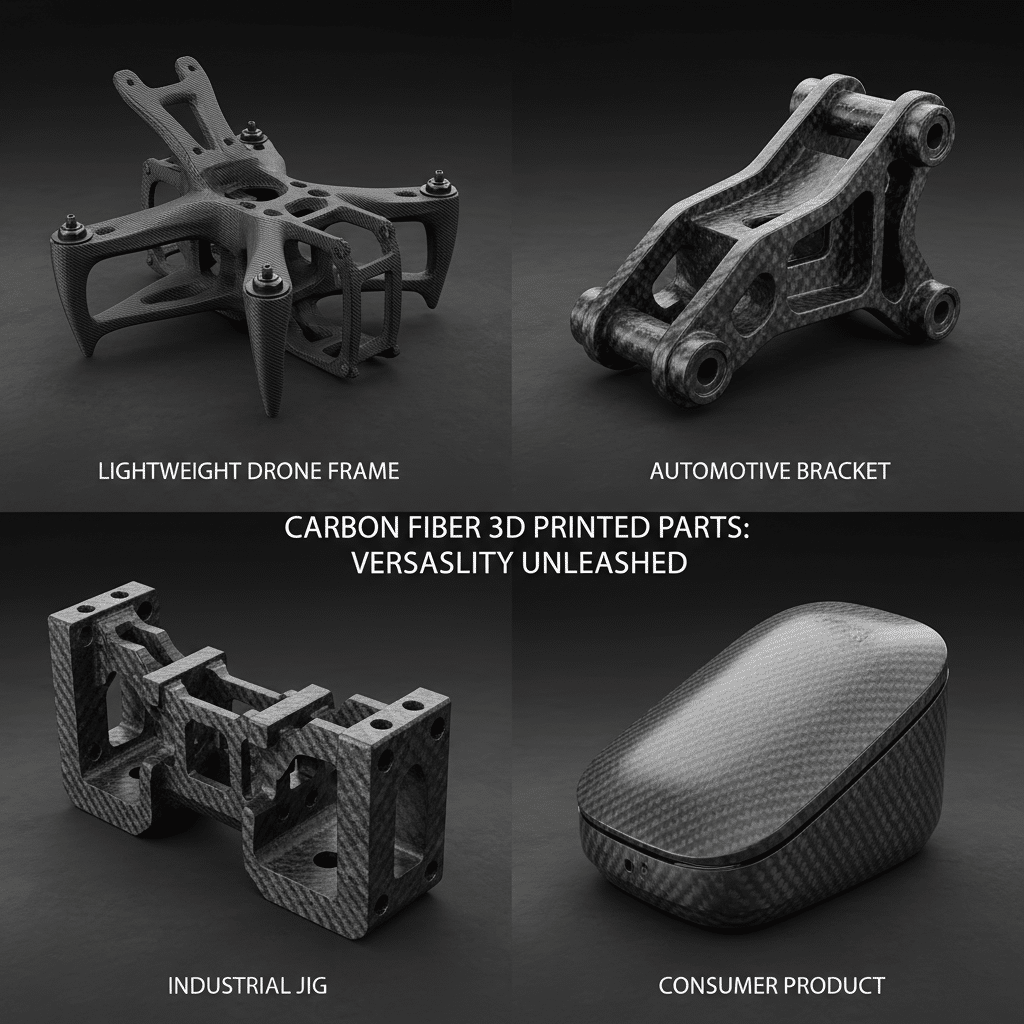
Getting Started: The Right Tools for Carbon Fiber 3D Printing
You’re excited, you’re convinced – now what? To jump into carbon fiber 3D printing, especially with chopped carbon fiber filaments, you’ll need a few key upgrades and considerations for your FDM printer.
Essential Hardware Upgrades:
- Hardened Nozzle: Carbon fibers are abrasive. They will quickly wear down a standard brass nozzle, increasing the nozzle diameter and ruining print quality. You absolutely need a hardened steel nozzle, or even better, a ruby-tipped nozzle for extended life.
- Abrasion-Resistant Extruder Gears: Similar to the nozzle, the gears that drive the filament can also wear down over time. Look for hardened steel extruder gears to prevent grinding and ensure consistent filament flow.
- All-Metal Hotend: While not strictly mandatory for all CCF filaments, an all-metal hotend is highly recommended, especially if you plan to print with higher-temperature materials like Nylon-CF. It allows for higher printing temperatures without issues like PTFE degradation.
- Heated Build Plate: Most carbon fiber filaments, especially those with Nylon or ABS bases, benefit greatly from a heated bed to prevent warping and ensure good first-layer adhesion.
- Enclosed Printer: An enclosed build chamber helps maintain a stable temperature around your print, which is crucial for minimizing warping, particularly with engineering-grade filaments. If your printer isn’t enclosed, consider building a simple enclosure.
- Dry Box for Filament Storage: Carbon fiber composite filaments (especially Nylon-CF) are highly hygroscopic, meaning they absorb moisture from the air. This leads to poor print quality, weak parts, and stringing. Store your filament in a dry box and consider actively drying it before printing.
Slicer Software Settings:
Optimizing your slicer settings is just as important as having the right hardware.
- Temperature: Carbon fiber often requires slightly higher extrusion temperatures than the base plastic alone. Consult your filament manufacturer’s recommendations.
- Print Speed: While tempting to print fast, slower speeds generally yield better results and adhesion with carbon fiber, allowing the material to properly melt and bond.
- Layer Height: Finer layer heights (e.g., 0.15mm-0.2mm) can often produce stronger parts by ensuring better interlocking of the fibers between layers.
- Infill: Don’t skimp on infill. Higher infill percentages and specific patterns (like rectilinear or gyroid) can dramatically increase part strength.
- Retraction: Fine-tune retraction settings to minimize stringing, which can be more pronounced with some carbon fiber filaments.
- Support Structures: Carbon fiber parts can be stiff, making support removal sometimes challenging. Experiment with support interfaces and densities.
Navigating the Challenges of Carbon Fiber 3D Printing
While the benefits are clear, carbon fiber 3D printing isn’t without its quirks. Knowing these challenges upfront helps you prepare and overcome them.
- Abrasiveness and Wear: This is the big one. As mentioned, carbon fiber is incredibly abrasive. It will chew through brass nozzles and even standard steel components. Investing in durable hardware is non-negotiable. Regular inspection of your nozzle and extruder gears is a good practice.
- Warping and Bed Adhesion: Many carbon fiber composites, especially Nylon and ABS bases, are prone to warping, where corners lift from the build plate. A heated bed, an enclosed printer, and good bed adhesion (using adhesives like glue stick, PEI sheets, or specific adhesion sprays) are vital.
- Moisture Absorption (Hygroscopy): Filaments like Nylon-CF are like sponges for atmospheric moisture. Wet filament leads to steam bubbles during printing, resulting in weak, brittle, and aesthetically poor prints (bubbly, stringy surfaces). Proper filament drying (using a food dehydrator, filament dryer, or even a convection oven at low temps) and dry storage are absolutely essential.
- Cost: Carbon fiber filaments and the specialized printers/components for continuous fiber printing are generally more expensive than their plain plastic counterparts. Factor this into your project budget.
- Post-Processing: While carbon fiber prints often have a great matte finish, if you plan to sand or paint them, be aware that the fibers can create unique challenges. Sanding carbon fiber can release fine carbon dust, which is an irritant, so always use proper respiratory protection and ventilation.
- Safety Considerations: Printing with carbon fiber can release micro-particles and volatile organic compounds (VOCs). Always ensure your workspace is well-ventilated, and consider using an air purifier with a HEPA/carbon filter. Don’t breathe in carbon dust.
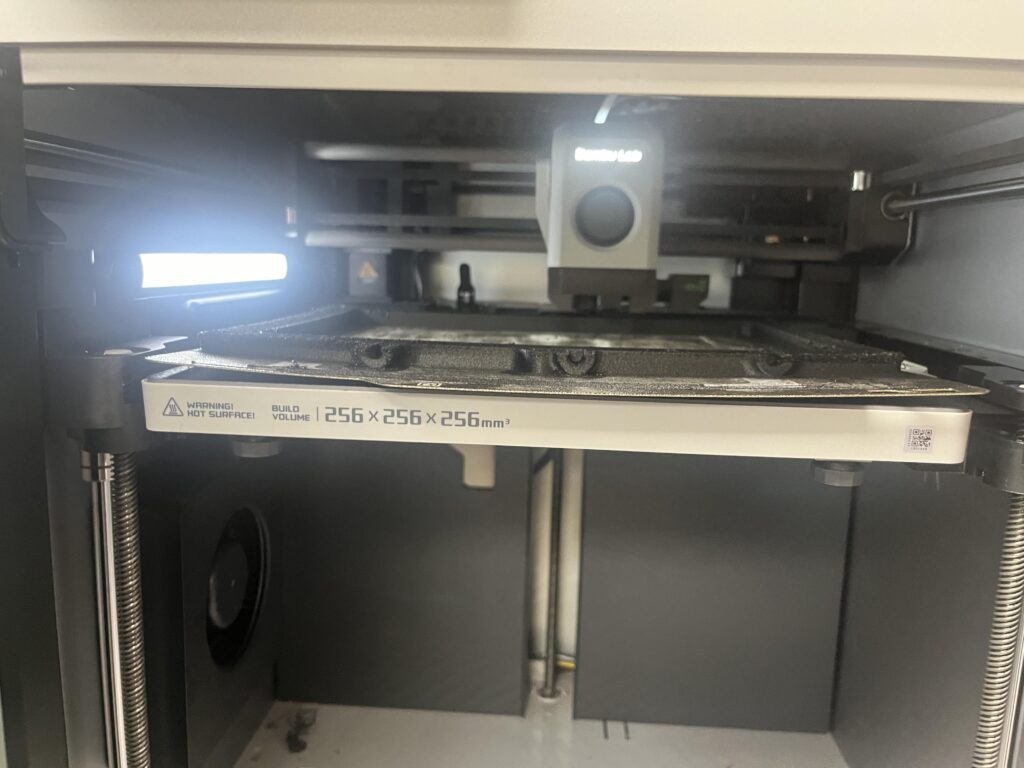
Tips for Success: Making Your Carbon Fiber Prints Shine
Ready to make some truly impressive carbon fiber prints? Here are some pro tips to help you succeed:
- Start Simple, Then Advance: Don’t jump straight to a complex, mission-critical part. Begin with smaller, less critical functional prints to dial in your settings and get a feel for the material.
- Dry Your Filament, Always: We can’t stress this enough. Even new, sealed filament can sometimes have moisture. Invest in a filament dryer or dehydrator. This one step can save you hours of troubleshooting and wasted material.
- Invest in Quality Hardware: A cheap hardened nozzle might seem like a bargain, but a high-quality one from a reputable brand will save you headaches in the long run. Good quality components ensure consistent results.
- Tune Your Retraction: Carbon fiber filaments can be prone to stringing. Spend time calibrating your retraction speed and distance to minimize this.
- Increase Nozzle Temperature Slightly: Often, carbon fiber filaments benefit from a slightly higher nozzle temperature than their non-CF counterparts. This helps the plastic flow better and ensures proper bonding between layers.
- Slow Down Your Print Speed: A slower print speed allows the material more time to heat up and bond, leading to stronger parts with better layer adhesion and fewer artifacts.
- Optimize Cooling: Too much cooling can cause warping, while too little can lead to poor overhangs. Experiment with your part cooling fan settings.
- Ensure Excellent Bed Adhesion: Don’t underestimate this. A failed first layer means a failed print. Use a reliable bed surface and appropriate adhesion aid for your chosen filament.
- Ventilate Your Workspace: Always print in a well-ventilated area. Consider an air filter. Your lungs will thank you.
- Consider Post-Processing: For aesthetic or functional finishing, remember that working with carbon fiber can be different. You might even consider using techniques like custom silicone molds to create smooth outer shells from your 3D printed masters, for instance, combining technologies for ultimate results.
- Join the Community: The 3D printing community is vast and helpful. Forums, social media groups, and online resources are great places to ask questions, share experiences, and learn from others who are also exploring carbon fiber printing.
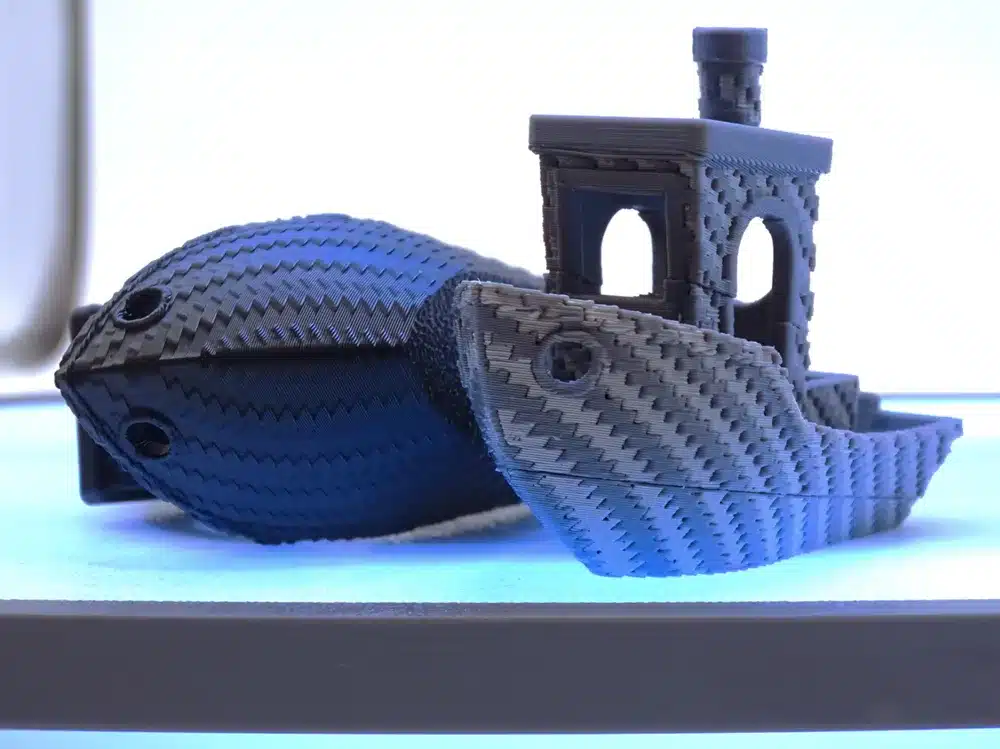

The Future is Strong: What’s Next for Carbon Fiber 3D Printing?
The journey of carbon fiber 3D printing is just getting started, and the future looks incredibly strong and exciting. We can expect several key developments that will make this technology even more accessible and powerful:
- Material Innovations: Expect new polymer matrices that are even better suited for carbon fiber integration, offering enhanced properties like higher temperature resistance, greater flexibility where needed, or improved biodegradability. We’ll also see more specialized fibers beyond standard carbon, like basalt or aramid, opening up niche applications.
- More Accessible Continuous Fiber Printers: Currently, continuous carbon fiber 3D printers are a significant investment. As technology matures and adoption increases, we’ll likely see more affordable and compact options entering the market, democratizing access to near-metal strength 3D printing for smaller businesses and even advanced prosumers.
- Smarter Software and AI Integration: Slicer software will become even more sophisticated, with AI-driven optimization to automatically determine optimal fiber placement, print parameters, and even predict part performance. This will reduce the learning curve and allow for more efficient, robust designs.
- Broader Industrial Adoption: As the technology proves itself, more industries will integrate carbon fiber 3D printing into their supply chains for both prototyping and end-use part manufacturing. This will reduce reliance on traditional manufacturing methods for certain components, leading to faster innovation cycles. In fact, advanced manufacturing techniques, like those leveraging carbon fiber 3D printing, are becoming a key blueprint for success for many companies.
- Hybrid Manufacturing: We’ll see more integration of carbon fiber 3D printing with other manufacturing processes, such as combining it with traditional machining for critical surfaces or embedding electronics directly into printed structures.
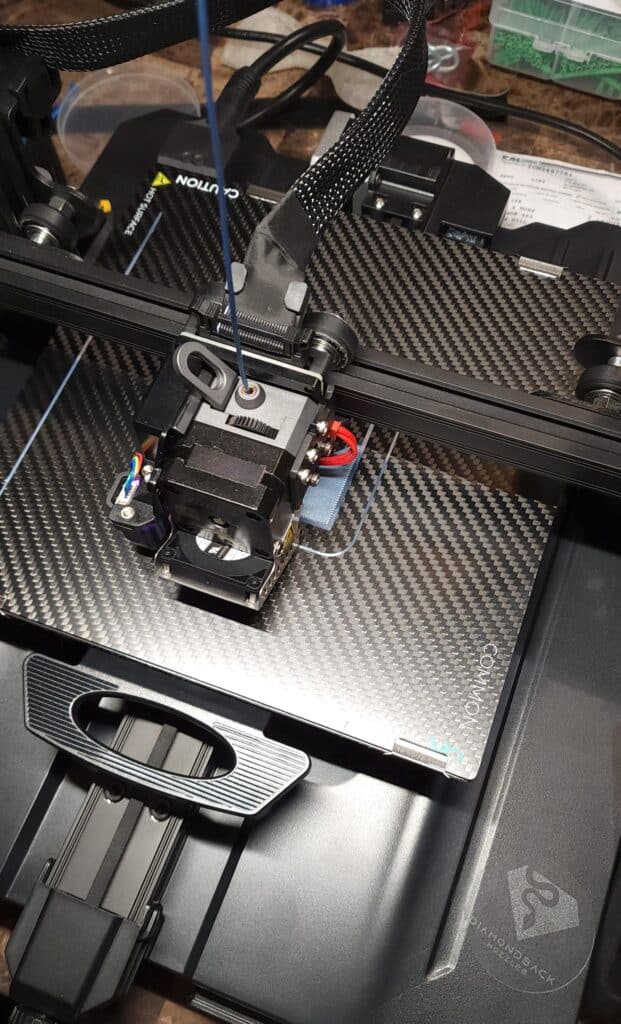

Conclusion: Embrace the Strength of Carbon Fiber
Carbon fiber 3D printing isn’t just a trend; it’s a significant leap forward in additive manufacturing. It allows you to create parts with a level of strength, stiffness, and durability that was once reserved for expensive industrial processes. Whether you’re an engineer pushing the boundaries of design, a hobbyist looking to create truly robust functional prints, or a business seeking an edge in custom manufacturing, diving into carbon fiber printing is a rewarding endeavor.
It demands a bit more attention to detail, some specific hardware upgrades, and a willingness to learn, but the payoff is immense. You’ll gain the ability to produce lighter, stronger, and more resilient components that can withstand real-world challenges. So, if you’re ready to elevate your 3D printing game and unlock a world of high-performance possibilities, it’s time to explore what carbon fiber 3D printing can do for you. The future of strong, lightweight, and custom-made parts is here, and it’s built with carbon fiber.
What is carbon fiber 3D printing?
Carbon fiber 3D printing involves using filaments or powders infused with tiny strands of carbon fiber, which significantly enhances the strength, stiffness, and durability of 3D printed parts by transferring the exceptional properties of carbon fiber to the components.
Why should I choose carbon fiber over regular plastics for 3D printing?
Carbon fiber provides an unmatched strength-to-weight ratio, exceptional stiffness, improved durability, higher temperature resistance, and better dimensional stability compared to standard plastics, making it ideal for high-performance applications.
What are the main forms of carbon fiber used in 3D printing?
The two main forms are chopped carbon fiber (CCF), which is short, dispersed fibers mixed into thermoplastics, and continuous carbon fiber (CFC), where long, unbroken strands are embedded within the polymer matrix during printing.
What technologies are used to incorporate carbon fiber into 3D printed parts?
Carbon fiber can be integrated into 3D printing through Fused Deposition Modeling (FDM/FFF) with CCF or CFC filaments, Selective Laser Sintering (SLS) with carbon-infused nylon powders, and resins in SLA or DLP processes with ceramic or reinforcing particles.
What hardware upgrades are necessary for 3D printing with carbon fiber filaments?
Essential hardware upgrades include a hardened steel or ruby-tipped nozzle, abrasion-resistant extruder gears, an all-metal hotend, a heated bed, an enclosed printer, and a dry box for filament storage to handle the abrasiveness and moisture absorption of carbon fiber composites.
- 0shares
- Facebook0
- Pinterest0
- Twitter0


